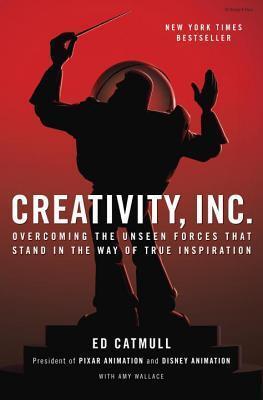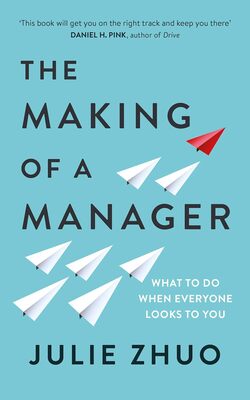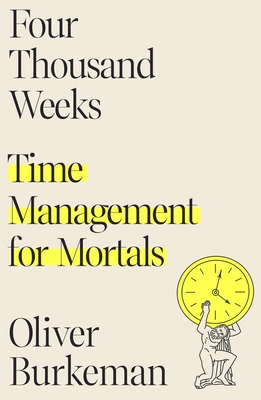
Don’t confuse the process with the goal. Working on our processes to make them better, easier, and more efficient is an indispensable activity and something we should continually work on—but it is not the goal. Making the product great is the goal.
The problem comes when people think that data paints a full picture, leading them to ignore what they can’t see. Here’s my approach: Measure what you can, evaluate what you measure, and appreciate that you cannot measure the vast majority of what you do. And at least every once in a while, make time to take a step back and think about what you are doing.
There are many valid reasons why people aren’t candid with one another in a work environment. Your job is to search for those reasons and then address them.
Decisions are made, usually for good reasons, which in turn prompt other decisions. So when problems arise—and they always do—disentangling them is not as simple as correcting the original error. Often, finding a solution is a multi-step endeavor. There is the problem you know you are trying to solve—think of that as an oak tree—and then there are all the other problems—think of these as saplings—that sprouted from the acorns that fell around it. And these problems remain after you cut the oak tree down.
There is nothing quite like ignorance combined with a driving need to succeed to force rapid learning.
read many such books as I set about trying to become a better, more effective manager. Most, I found, trafficked in a kind of simplicity that seemed harmful in that it offered false reassurance. These books were stocked with catchy phrases like “Dare to fail!” or “Follow people and people will follow you!” or “Focus, focus, focus!” (This last one was a particular favorite piece of nonadvice. When people hear it, they nod their heads in agreement as if a great truth has been presented, not realizing that they’ve been diverted from addressing the far harder problem: deciding what it is that they should be focusing on. There is nothing in this advice that gives you any idea how to figure out where the focus should be, or how to apply your energy to it. It ends up being advice that doesn’t mean anything.) These slogans were offered as conclusions—as wisdom—and they may have been, I suppose. But none of them gave me any clue as to what to do or what I should focus on.
If you give a good idea to a mediocre team, they will screw it up. If you give a mediocre idea to a brilliant team, they will either fix it or throw it away and come up with something better. The takeaway here is worth repeating: Getting the team right is the necessary precursor to getting the ideas right. It is easy to say you want talented people, and you do, but the way those people interact with one another is the real key. Even the smartest people can form an ineffective team if they are mismatched. That means it is better to focus on how a team is performing, not on the talents of the individuals within it.
Managers scour books and magazines looking for greater understanding but settle instead for adopting a new terminology, thinking that using fresh words will bring them closer to their goals. When someone comes up with a phrase that sticks, it becomes a meme, which migrates around even as it disconnects from its original meaning. To ensure quality, then, excellence must be an earned word, attributed by others to us, not proclaimed by us about ourselves. It is the responsibility of good leaders to make sure that words remain attached to the meanings and ideals they represent.
Believe me, you don’t want to be at a company where there is more candor in the hallways than in the rooms where fundamental ideas or matters of policy are being hashed out.
If you aren’t experiencing failure, then you are making a far worse mistake: You are being driven by the desire to avoid it. And, for leaders especially, this strategy—trying to avoid failure by out-thinking it—dooms you to fail. As Andrew puts it, “Moving things forward allows the team you are leading to feel like, ‘Oh, I’m on a boat that is actually going towards land.’ As opposed to having a leader who says, ‘I’m still not sure. I’m going to look at the map a little bit more, and we’re just going to float here, and all of you stop rowing until I figure this out.’ And then weeks go by, and morale plummets, and failure becomes self-fulfilling. People begin to treat the captain with doubt and trepidation. Even if their doubts aren’t fully justified, you’ve become what they see you as because of your inability to move.”
I have found that people who pour their energy into thinking about an approach and insisting that it is too early to act are wrong just as often as people who dive in and work quickly. The overplanners just take longer to be wrong (and, when things inevitably go awry, are more crushed by the feeling that they have failed). There’s a corollary to this, as well: The more time you spend mapping out an approach, the more likely you are to get attached to it. The nonworking idea gets worn into your brain, like a rut in the mud. It can be difficult to get free of it and head in a different direction. Which, more often than not, is exactly what you must do.
In many workplaces, it is a sign of disrespect if someone surprises a manager with new information in front of other people. But what does this mean in practice? It means that there are pre-meetings before meetings, and the meetings begin to take on a pro forma tone. It means wasted time. It means that the employees who work with these people walk on eggshells. It means that fear runs rampant.
Your employees are smart; that’s why you hired them. So treat them that way. They know when you deliver a message that has been heavily massaged. When managers explain what their plan is without giving the reasons for it, people wonder what the “real” agenda is. There may be no hidden agenda, but you’ve succeeded in implying that there is one. Discussing the thought processes behind solutions aims the focus on the solutions, not on second-guessing. When we are honest, people know it.
“Sometimes in meetings, I sense people seizing up, not wanting to even talk about changes,” he says. “So I try to trick them. I’ll say, ‘This would be a big change if we were really going to do it, but just as a thought exercise, what if …’ Or, ‘I’m not actually suggesting this, but go with me for a minute …’ If people anticipate the production pressures, they’ll close the door to new ideas—so you have to pretend you’re not actually going to do anything, we’re just talking, just playing around. Then if you hit upon some new idea that clearly works, people are excited about it and are happier to act on the change.”
Sometimes a big event happens that changes everything. When it does, it tends to affirm the human tendency to treat big events as fundamentally different from smaller ones. That’s a problem, inside companies. When we put setbacks into two buckets—the “business as usual” bucket and the “holy cow” bucket—and use a different mindset for each, we are signing up for trouble. We become so caught up in our big problems that we ignore the little ones, failing to realize that some of our small problems will have long-term consequences—and are, therefore, big problems in the making.
As I’ve said, you don’t always know how big a problem is when you first encounter it. It may seem small, but it also might be the straw that breaks the camel’s back. If you have the tendency to put problems in buckets, you may not know which bucket to put it in. The difficulty is that we prioritize problems by size and importance, frequently ignoring small problems because of their abundance. But if you push the ownership of problems down into the ranks of an organization, then everyone feels free (and motivated) to attempt to solve whatever problem they face, big or small. I can’t predict everything that our employees will do or how they will respond to problems, and that is a good thing. The key is to create a response structure that matches the problem structure.
If we can agree that it’s hard, if not impossible, to get a complete picture of what is going on at any given time in any given company, it becomes even harder when you are successful. That’s because success convinces us that we are doing things the right way. There is nothing quite as effective, when it comes to shutting down alternative viewpoints, as being convinced you are right.
Craft is what we are expected to know; art is the unexpected use of our craft.
Does this kind of microdetail matter? I believe it does. There’s something about knowing your subject and your setting inside and out—a confidence—that seeps into every frame of your film. It’s a hidden engine, an unspoken contract with the viewer that says: We are striving to tell you something impactful and true. When attempting to make good on that promise, no detail is too small.
The oversight group had been put in place without anyone asking a fundamental question: How do we enable our people to solve problems? Instead, they asked: How do we prevent our people from screwing up? That approach never encourages a creative response. My rule of thumb is that any time we impose limits or procedures, we should ask how they will aid in enabling people to respond creatively. If the answer is that they won’t, then the proposals are ill suited to the task at hand.
Internally, because everyone knows the shorts have no commercial value, the fact that we continue to make them sends a message that we care about artistry at Pixar; it reinforces and affirms our values. And that creates a feeling of goodwill that we draw on, consciously and unconsciously, all the time.
Companies, like individuals, do not become exceptional by believing they are exceptional but by understanding the ways in which they aren’t exceptional.
remain aware that, no matter how much you urge them otherwise, your people will be afraid to be critical in such an overt manner. One technique I’ve used to soften the process is to ask everyone in the room to make two lists: the top five things that they would do again and the top five things that they wouldn’t do again. People find it easier to be candid if they balance the negative with the positive, and a good facilitator can make it easier for that balance to be struck.
In my experience, creative people discover and realize their visions over time and through dedicated, protracted struggle. In that way, creativity is more like a marathon than a sprint. You have to pace yourself.
Andrew likens the director’s job to that of a ship captain, out in the middle of the ocean, with a crew that’s depending on him to make land. The director’s job is to say, “Land is that way.” Maybe land actually is that way and maybe it isn’t, but Andrew says that if you don’t have somebody choosing a course—pointing their finger toward that spot there, on the horizon—then the ship goes nowhere. It’s not a tragedy if the leader changes her mind later and says, “Okay, it’s actually not that way, it’s this way. I was wrong.” As long as you commit to a destination and drive toward it with all your might, people will accept when you correct course.
When mediating between two groups who aren’t communicating well, for example, Lindsey feigns confusion. “You say, ‘You know, maybe it’s just me, but I don’t understand. I’m sorry I’m slowing you down here with all my silly questions, but could you just explain to me one more time what that means? Just break it down for me like I’m a two-year-old.’
we decided early on that Pixar and Disney Animation should remain completely separate entities. What this meant was that neither would do any production work for the other, no matter how pressing the deadlines or how dire the situation. No exceptions. Why? Because mixing the two staffs would have been a bureaucratic nightmare. But there was an overarching management principle at work as well. Simply put, we wanted each studio to know that it could stand on its own and solve its own problems. If we made it easy for one studio to borrow people or resources from the other to help solve a problem, the upshot would be that we’d mask the problem. Not allowing such borrowing was a conscious choice on our part to force problems to the surface where we could face them head on.
When costs are low, it’s easier to justify taking a risk. Thus, unless we lowered our costs, we would effectively limit the kinds of films that we would be able to make. Moreover, there was another benefit of lowering costs. Cheaper films are made with smaller crews, and everyone agrees that the smaller the crew, the better the working experience. It’s not just that a leaner crew is closer and more collegial; it’s that on a smaller production it’s easier for people to feel that they’ve made an impact.
Unleashing creativity requires that we loosen the controls, accept risk, trust our colleagues, work to clear the path for them, and pay attention to anything that creates fear. Doing all these things won’t necessarily make the job of managing a creative culture easier. But ease isn’t the goal; excellence is.
Failure isn’t a necessary evil. In fact, it isn’t evil at all. It is a necessary consequence of doing something new.
The people ultimately responsible for implementing a plan must be empowered to make decisions when things go wrong, even before getting approval. Finding and fixing problems is everybody’s job. Anyone should be able to stop the production line.
An organization, as a whole, is more conservative and resistant to change than the individuals who comprise it. Do not assume that general agreement will lead to change—it takes substantial energy to move a group, even when all are on board.



